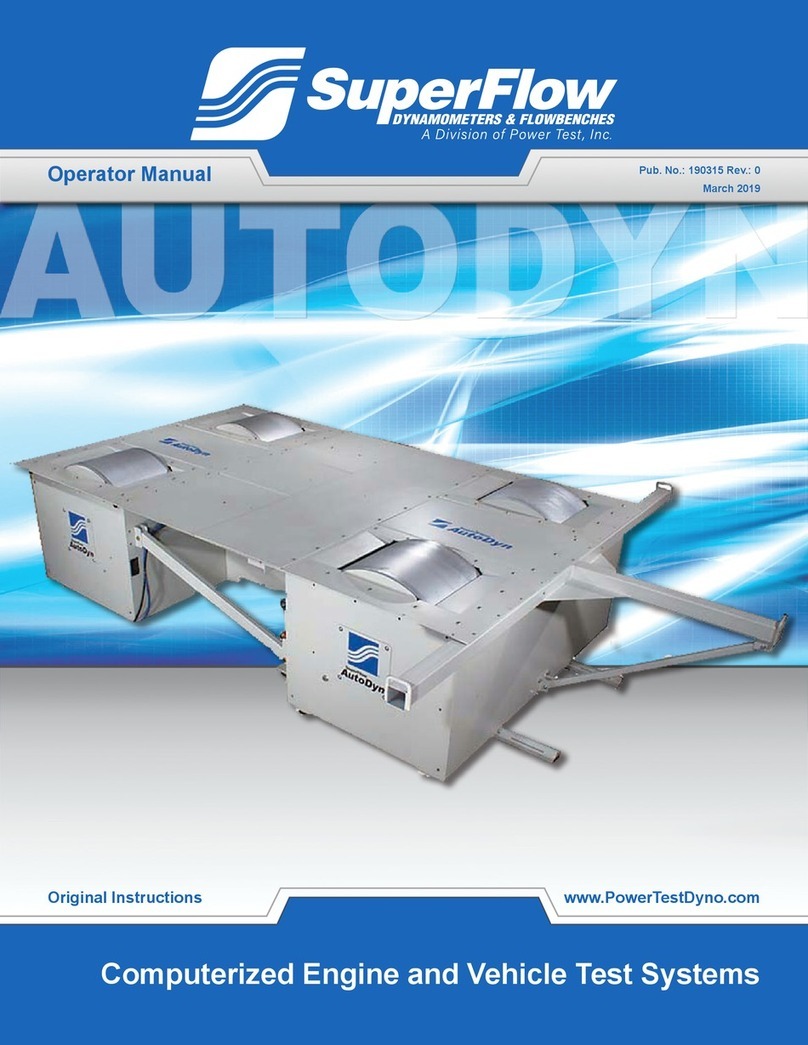
ii
Please keep this manual for future reference.
This manual is intended to assist operating personnel in becoming familiar with the product and as guidance
in ordering necessary parts inclusive of SuperFlow's warranty requirements. Maximum operating eciency
and life of any SuperFlow Product will be attained through complete understanding of the instructions and
recommendations contained within this manual.
Services performed beyond preventive
maintenance by personnel other than SuperFlow
Service Technicians on any SuperFlow products
during the warranty period may void the warranty.
!WARNING
When available, please include the model
number and serial number of the product in any
correspondence.
IMPORTANT
Copyright 2019 by SuperFlow, a division of Power Test, Inc. All rights reserved. No part of this publication may
be reproduced, transcribed, or translated by any means without the prior written permission of SuperFlow,
N60 W22700 Silver Spring Drive, Sussex, WI 53089 USA.
No part of the software or rmware provided with this product may be upgraded, modied, or changed by any
means without the prior written permission of SuperFlow.
Power Test, PowerNet, SuperFlow, WinDyn, ProFilter, SF902, XConsole, XDyno, XCart, NSCR, CycleDyn,
AutoDyn, FlowCom, SuperBench, ProExport, SF-110/120/260/450/600/750, SF-1020, SF1200, ProBench,
SuperBench, TD-1200, TDAC,AIDCO, Axiline, TCRS, Hicklin, Racer’s Pack, and SuperShifter are trademarks
of Power Test, Inc. Other trademarks and trade names may be used in this document that refer to the entities
claiming the marks and names or their products. Power Test, Inc. does not hold any proprietary interest in
trademarks or trade names other than its own.
Trademark Notices




























